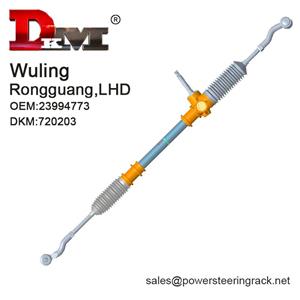-
Yes! During the long-term use of a car or machine, manual rack and pinion gear may indeed fail due to frequent movement and high load use. Although these failures are not common, the probability of their occurrence increases with the age of the car.
-
● Reduce the number of teeth on the gear: If the number of teeth on the gear is reduced and the pitch of the rack remains the same, each rotation of the gear will drive the rack to move a greater distance, thereby reducing the steering ratio. ● Increase the pitch of the rack: By increasing the pitch of the teeth on the rack, the rack can be moved farther when the gear rotates the same angle.
-
Rack and pinion gear wear is usually caused by long-term use and lack of proper lubrication. Especially in hydraulic power steering systems, rack and pinion gear wear will directly affect the pressure transmission of hydraulic oil, causing the steering wheel to turn heavy.
-
The power steering gear and rack and pinion are the two core components of the steering system. They are not directly "connected" to each other in terms of physical structure, but work together through control force and power assistance.
-
0906-2025
Can rack and pinion gear get clogged?
The environment around the rack and pinion gear is relatively complex, especially in some harsh driving conditions, mud, sand, dust and other external debris can easily enter the steering system. These debris may accumulate between the rack and pinion gear, causing it to engage poorly.
-
Determine the design goals of rack and pinion gear according to the vehicle type, purpose and performance requirements. For example: How much steering force is required? What is the maximum steering angle of the wheel? What is the expected service life and maintenance cycle?
-
If the steering wheel is obviously heavy when turning, or the steering is not smooth, it may be that the wear of the rack and pinion gear has increased friction. In this case, the owner should check and replace the rack and pinion gear assembly as soon as possible to avoid affecting driving safety.
-
n today's automotive market, rack and pinion steering systems still occupy an important position, especially in small and medium-sized passenger cars. However, with the development of technology, the popularity of electric power steering systems (EPS) is increasing, and it has gradually become a strong competitor to rack and pinion steering systems.
-
The rack and pinion steering system can provide high accuracy and stable controllability due to its precise gear meshing design. For four-wheeled motorcycles, this high-precision steering system can ensure that the driver can still maintain a good control experience in off-road or complex road conditions.
-
After replacing the rack and pinion, one of the most important steps is to perform a four-wheel alignment. The four-wheel alignment is not only to ensure the correct alignment of the wheels, but also to ensure that the geometric relationship of the steering system is accurately calibrated.




